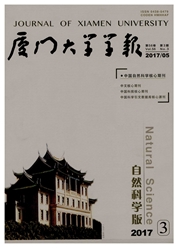

 中文摘要:
中文摘要:
针对复杂多变、强多途和大起伏的浅海水声信道,本文建立了包括时变衰落、多途和加性干扰在内的信道仿真模型及Turbo码编/译码结构.通过计算机仿真,研究了浅海水声信道中的Turbo码性能及Turbo码性能随多途效应、衰落率和信道交织器等的变化.结果表明:在水声通信可接受的信噪比范围内(10~20dB),Turbo码具有良好的性能(误比特率小于10^-4);浅海水声信道中,Turbo码性能随多途路径数的增加而下降;Turbo码性能随衰落率的减小而略有下降;浅海水声信道中,信道交织器可改善Turbo码性能,并弥补由于衰落率不同而造成的性能差异.
 英文摘要:
英文摘要:
Shallow water acoustic channels introduce long multipath spreads and rapid time variations that deteriorate the performance of digital communication systems. These characteristics of the channel limit the data rate of reliable communication systems and require sophisticated equalization and coding technique. In this paper,a channel model including time-varying fading,multipath and additive noise for the shallow water acoustic channels is built,and one of the turbo coder/decoder is introduced. Based on the channel model, the performance of the turbo code over shallow water acoustic channel is simulated,and the effects of multipath, fading velocity and channel interleaver on the decoding performance are studied. As the result, the following four conclusions can be given safely.. SNR (signal noise rate) at the range of number accepted by underwater acoustic communication (10~ 20 dB), the performance of turbo code is excellent (Bit error rate less than) ; The performance of turbo code degrades with the increasing of the number of multipath; under the condition of 8 dB of SNR, the performance of turbo code degrades 20 dB or so with three multipath comparing with one paths The performance of turbo code degrades slowly with the decreasing of the fading velocity ;Channel interleaver can improve the performance of turbo code,and make up its difference because of different fading velocity.
 同期刊论文项目
同期刊论文项目
 同项目期刊论文
同项目期刊论文
 期刊信息
期刊信息
